sndmn11
"DADDY"
About a year ago I decided to track down a spotting scope that was light and compact enough that provided a view good enough that I would want to pack it around, as well as light and compact enough that it wasn’t cumbersome. I began to research 50mm spotting scopes, and put together the below chart from listed specs. Some conversations with a few of the manufacturers, and I settled on having an Opticron MM4 60mm demo unit headed my way.

The Opticron MM4 is made in Japan, and with the SDLv2 eyepiece the unit is waterproof. Magnification for this combo 60mm/SDLv2 is reported to be 15-45x, and mine weight about 39oz with an arca swiss plate and the lens caps.

The angled version allows the ocular end to rotate about 180degrees, although when doing so the image shifts which I found to be odd. The eyepiece can be removed and swapped between bodies, and other eyepieces are available but not waterproof. Field of view is reported to be 36-60deg for the SDLv2, and in my year of use I never felt the view cramped nor did anyone who borrowed it. ED glass is used in the front element, and when I asked what the difference between the MM3 and MM4 was, that point and the country of build seemed to be the notable differences.
“The MM3 60 GA is our current entry level birding travelscope and is Made in China. Optically it does not feature an extra low dispersion glass “ED” front element. This means that as the magnification increases, the colours overlap reducing apparent resolution. Users can also experience small amounts of CA chromatic aberration which presents itself as a violet edge to shapes being viewed
The MM4 GA ED is based on the MM3 GA & previous ED models; but is made in Japan (vs. China) and is built using an entirely different set of component parts and rubber armour. It also features an extra low dispersion glass “ED” front element. The results are an instrument with a higher build quality and feel that delivers brighter sharper images – noticeable to even the most untrained eye.“
Everything went well for this spotter over the last year. I had no case for it and it would get strapped to a pack or just set in the seat of the truck for travel and nothing went awry. It went on a summer of pronghorn and sheep scouting, hunts for both species, and then a combined season of deer and elk. I ended up getting a Phone Skope set up after canning my 5 year old phone and picking up a Google Pixel. The MM4 has an 8:1 ratio dual focus knob that was outstanding. There is no play in either focus speed, and it was very easy to get the view correct with no back and forth. Combined with the auto focus of the phone, the whole set up worked out great.
My expectations were exceeded with the quality of the view with my eyes, and over the year I had a few other manufacturers’ spotters in front of me at similar price points, and none impressed. At dawn and dusk there is increased degradation of the view for about 15-30min difference compared to my Swarovski 10x42 SCLs or numerous Maven B series depending on cloud cover, which way you were viewing, and if you were looking into cover and shadow or into the open. During that time, eye relief would get finicky at full magnification, but progressively turning down the magnification would remedy this. Nobody reported any chromatic aberration, or other hiccups beyond minimal light issues. I believe seven folks hunted with it this year. My wife had the only other complaint in that she didn’t like only using one eye…..so for this coming year, she has a pair of 18x Maven B5s to go with her 8x B1s.
As a standalone tool, it was a fantastic addition to my overall experience and immensely helpful in our hunting. Combined with the Phone Skope, it was invaluable for range time, and I was able to catch my step-father’s pronghorn stalk with ease. The only thing I have changed from the setup is getting a fluid head to replace the ball head. I have no desire at this point to seek out a “better” spotting scope as this was pretty much perfect for satisfying my budget, performance needs, and handiness wants. I wanted to take a moment to share this with others, because I think it is an option worth more notoriety for folks trying to meet the same parameters I was. I actually get excited to use it and look forward to terrain conducive to a spotting scope.
Below are a handful of the many stills that were taken through my MM4 over the last year. I have many that were zoomed in with the phone to fill the whole image with content, and would be happy to share my favorites if needed, but I thought the more valuable ones would show the full view since someone will ask about edge clarity. I didn't plan ahead very well and most of my pictures were zoomed in.
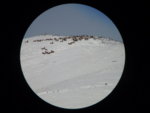
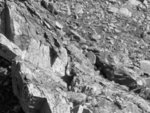
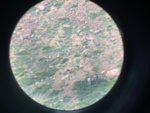
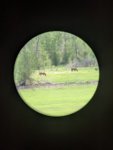
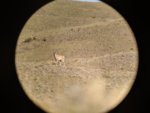

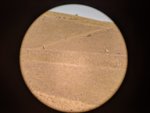

The Opticron MM4 is made in Japan, and with the SDLv2 eyepiece the unit is waterproof. Magnification for this combo 60mm/SDLv2 is reported to be 15-45x, and mine weight about 39oz with an arca swiss plate and the lens caps.

The angled version allows the ocular end to rotate about 180degrees, although when doing so the image shifts which I found to be odd. The eyepiece can be removed and swapped between bodies, and other eyepieces are available but not waterproof. Field of view is reported to be 36-60deg for the SDLv2, and in my year of use I never felt the view cramped nor did anyone who borrowed it. ED glass is used in the front element, and when I asked what the difference between the MM3 and MM4 was, that point and the country of build seemed to be the notable differences.
“The MM3 60 GA is our current entry level birding travelscope and is Made in China. Optically it does not feature an extra low dispersion glass “ED” front element. This means that as the magnification increases, the colours overlap reducing apparent resolution. Users can also experience small amounts of CA chromatic aberration which presents itself as a violet edge to shapes being viewed
The MM4 GA ED is based on the MM3 GA & previous ED models; but is made in Japan (vs. China) and is built using an entirely different set of component parts and rubber armour. It also features an extra low dispersion glass “ED” front element. The results are an instrument with a higher build quality and feel that delivers brighter sharper images – noticeable to even the most untrained eye.“
Everything went well for this spotter over the last year. I had no case for it and it would get strapped to a pack or just set in the seat of the truck for travel and nothing went awry. It went on a summer of pronghorn and sheep scouting, hunts for both species, and then a combined season of deer and elk. I ended up getting a Phone Skope set up after canning my 5 year old phone and picking up a Google Pixel. The MM4 has an 8:1 ratio dual focus knob that was outstanding. There is no play in either focus speed, and it was very easy to get the view correct with no back and forth. Combined with the auto focus of the phone, the whole set up worked out great.
My expectations were exceeded with the quality of the view with my eyes, and over the year I had a few other manufacturers’ spotters in front of me at similar price points, and none impressed. At dawn and dusk there is increased degradation of the view for about 15-30min difference compared to my Swarovski 10x42 SCLs or numerous Maven B series depending on cloud cover, which way you were viewing, and if you were looking into cover and shadow or into the open. During that time, eye relief would get finicky at full magnification, but progressively turning down the magnification would remedy this. Nobody reported any chromatic aberration, or other hiccups beyond minimal light issues. I believe seven folks hunted with it this year. My wife had the only other complaint in that she didn’t like only using one eye…..so for this coming year, she has a pair of 18x Maven B5s to go with her 8x B1s.
As a standalone tool, it was a fantastic addition to my overall experience and immensely helpful in our hunting. Combined with the Phone Skope, it was invaluable for range time, and I was able to catch my step-father’s pronghorn stalk with ease. The only thing I have changed from the setup is getting a fluid head to replace the ball head. I have no desire at this point to seek out a “better” spotting scope as this was pretty much perfect for satisfying my budget, performance needs, and handiness wants. I wanted to take a moment to share this with others, because I think it is an option worth more notoriety for folks trying to meet the same parameters I was. I actually get excited to use it and look forward to terrain conducive to a spotting scope.
Below are a handful of the many stills that were taken through my MM4 over the last year. I have many that were zoomed in with the phone to fill the whole image with content, and would be happy to share my favorites if needed, but I thought the more valuable ones would show the full view since someone will ask about edge clarity. I didn't plan ahead very well and most of my pictures were zoomed in.







Last edited:
